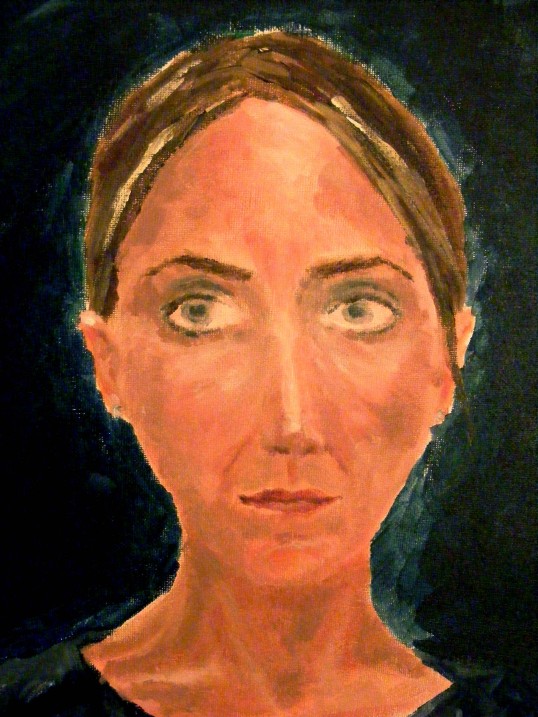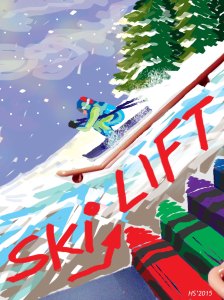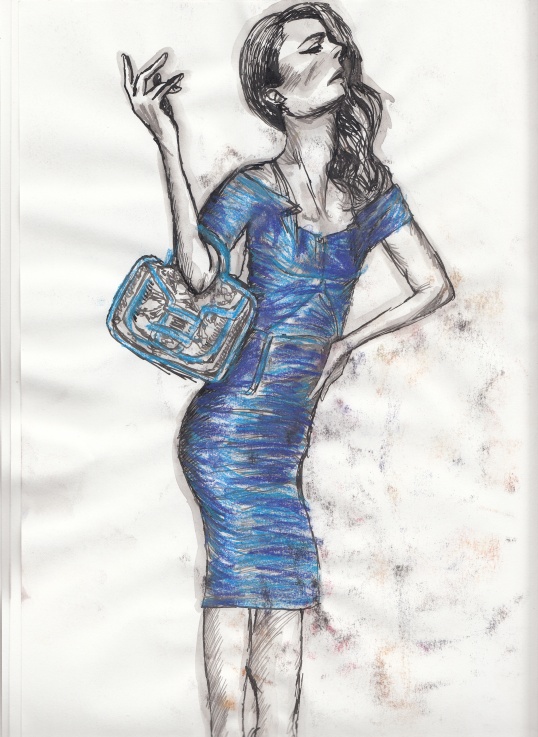On the day I learned of Michael’s suicide , I knew that the lens through which I had viewed life to this point — particularly, my life — would be irrevocably changed.
For years, Michael had been my close friend and confidant. We had worked together. At one time — and arguably throughout much of our acquaintance — we had been more than friends; alas, timing had always prevented a romantic relationship from taking root. Nonetheless, the depth of my connection with Michael was such that I never imagined a day when he would not be present in my life in some way.
In the weeks and months that followed his death — after the memorial service, after the acute period of official mourning had ended, after life was supposed to return to ‘normal’ — I began to realize that I could not rouse myself from this dreadful, windowless space of a nightmare I was in. Michael was dead. This was the new reality. There would be no more exchanges of e-mails, phone calls, pages, or texts. No more teasing. No more birthday or Christmas cards. No more car rides home after work. No more visits or long evenings spent lingering over a supper at a charming restaurant. No more wondering how Michael was or what he was up to at a given moment…
When I think back to what I miss most about Michael, it is the conversations we used to have about everything and nothing. While our collective intellectual curiosity made for interesting, broad explorations of topics, it was the ease with which we related to each other that I miss most. We spoke the same language. There was a mutual understanding, a connection. In French, we would be described as having a certain complicité. In the early years of our acquaintance, we were known to engage in a written repartée of wordy one-upmanship. A thinly veiled guise perhaps for what was a blossoming affection but (sadly) impossible courtship.
It’s interesting how life’s monumental events can serve to obfuscate one’s recollection of what life was like before the sentinel event. Think of September 11th, 2001. How innocent, fuzzy, and even Utopian life appeared prior to this infamous date. It would seem that September 11th, 2001 has become a precipice or modern-day historical dividing line, much like B.C. (before Christ) and A.D. (anno domini or after death). I’m not entirely certain if this kind of historical gravitas is a construct we might uniquely associate with calamatous events or whether events characterized by momentous joy would similarly constitute a re-set of one’s life; however, I suspect if you were to ask anyone who has met and married the person whom they believe to be the love of their life, he/she will probably confess to having a hard time recollecting the details of their life prior to meeting their love.
One thing I can remember with absolute clarity before Michael’s death was a particular fictional — and on retrospect, eerily prophetic in some ways — book I had coincidentally decided to read, following months of buzz from various bestsellers lists. It was The Shack by William P. Young. On top of rarely reading works of fiction (which I can’t quite reconcile as a self-identified creative type), why I had chosen to read this particular book with its tragic and existential subject matter only weeks before Michael’s suicide. It seemed almost like divine intervention to me. An unexpected emotional preparatory course in how to grieve, how to forgive, and how to let go.
Although I have previously experienced the loss of loved ones to death — my Dutch grandmother had died less than 2 months before Michael — it is the shock and surrealism of losing a loved one so abruptly, such as by suicide or sudden death, that the rational self, so accustomed to order and fairness, can’t help but plunge into questions of why in an attempt to make sense and restore order to the chaos which has beset one’s world.
In my case, trying in vain to reconcile an answerless question eventually spawned more difficult questions. Where is Michael now? Can he see me?Is he watching over his loved ones? If he does see the living, does he see the sorrow he has inflicted? Can he perceive our thoughts? Will I ever see him again?
There is a painting by the early modernist, 20th century Russian-born artist, Marc Chagall, that I find captivating, called Birthday (see below). The seemingly quotidian but ethereal imagery depicts a powerful, vivid narrative to me. Although I am not certain of the true meaning behind this painting, to me it represents a woman in mourning in her sombre, black dress, going through the motions of marking a birthday — perhaps her own birthday — while a sad, ghostly male figure hovers longingly overhead desperately attempting to reconnect with his former lover (perhaps wife) through an impossible kiss, in defiance of the Laws of Nature and his departure from the land of the living.

Birthday by Marc Chagall
Following several weeks of grief counseling, one of the other ways in which I sought solace and healing after Michael’s death was to enroll in an introductory acrylic painting class through the Ottawa School of Art. Artistic expression, I thought, would be a way of releasing grief, freeing myself from some of the residual sadness and uncertainty I still carried post-counseling while exposing me to a new activity and new people. I had not painted since high school, so I was somewhat apprehensive about stepping back into this medium, which had never felt as natural to me as drawing. The class turned out to be very therapeutic. I discovered I was able to completely immerse myself in the activity for hours at a time, often foregoing scheduled breaks.
After producing several ‘studies’ or practice pieces (see below), I decided it was time I brought in an old photo of Michael to paint. I viewed it as an opportunity to conduct an unspoken conversation with him, while seeing what kind of emotions might percolate to the surface as I studied, contemplated, and interpreted his image on canvas. I believed this exercise would force me to sit with the last vestiges of my acute grief and articulate some of the emotions that had not yet found their expression through words. I did not share any details of this choice of subject matter, however, with my teacher or classmates, other than that he was a good friend. I spent several weeks working on this painting [not shown], struggling at times to get his facial features just right, and then finally reached a point where I felt I was done. Since I am not one to believe art is ever truly ‘done’, I took this to mean I had made peace with his death. I was ready to move on to something else. Something different. Something new.

Red Pepper, acrylic, 2010

Sadness, acrylic, 2010

Cape Spear Lighthouse, acrylic, 2010

Sunset over Lake, acrylic, 2010

Mordecai study, acrylic, 2010
My Oma (Dutch for grandmother) was always tough on me. Loved to argue, push my buttons, say hurtful things sometimes. I couldn’t understand why she’d behave in such ways sometimes; she was cognitively intact. It was only at her funeral that I learned the incredible details of her immigration to Canada (thanks to my aunt — a very gifted storyteller and amateur historian), how she left her family and a comfortable, upper-middle-class life in Holland for a rural, uncertain, financially-constrained life with her husband and a new family on the way in eastern Canada. What struck a particularly poignant chord with me, however, was learning about how she had met her husband so serendipitously on a daily commuter train to/from work in Holland. Their painful separation during the war — her eventual husband/my grandfather having to go into hiding because of his participation in the Dutch Underground resistance movement. And then their just as providential, joyous reunion in a food stamps line in Holland after the war…
These experiences inevitably would’ve shaped her worldview and in that moment of hearing this story, I felt a connection with her that I hadn’t felt before. Suddenly, I was able to feel her pain, her loneliness in her aging, widowed years, and the impatience directed at her children and grandchildren for embracing life’s opportunities and adventures and not squandering one’s time. In that moment, she seemed both fearless and vulnerable to me. The thin veil pulled back, a great humanity revealed. My oma had been entreating — not chastising — me (and others), it seemed, all these years to take more risks (like she had) and live more courageously and therefore, fully.
Fear is a powerful, negative, often paralyzing, psychological force; its origins often not readily accessible by the conscious mind. In the two weeks preceding his suicide, I know that Michael feared how his life would evolve as a consequence of some major life changes. Although I will never know the precise why, if indeed there is an identifiable precise why, answering the unanswerable questions has become less important to me. What has become more important to me in the almost three years following Michael’s untimely death, however, is finding my inner courage to live a purposeful, meaningful life not just for my own personal benefit but for that of my broader community. Professionally, this means having the courage to seek out resonance in my work, where I make regular use of my natural talents instead of being contented to play it safe and remain an under-actualized square peg in a round hole. Personally, this means confronting the fear — much like I did with Michael’s painting — to sit with it, feel it, and then move past it. [I am presently reading my third book by the very wise, articulate Harold S. Kushner entitled, Conquering Fear: Living Boldly in an Uncertain World.] To choose to be in relationship in spite of the fear of losing a loved one. To reframe my thinking around change in order to recognize that not all change is bad and some change might actually be good. And to remember that reward is not possible if one never ventures to take a risk.
“Courage is acting in spite of fear” – Howard W. Hunter
Posted in
Art,
Ideas,
Life lessons and tagged
art,
book,
change,
courage,
death,
essay,
fear,
grief,
hope,
ideas,
life,
loss,
painting,
philosophy,
resilience,
self-help,
suicide |


















